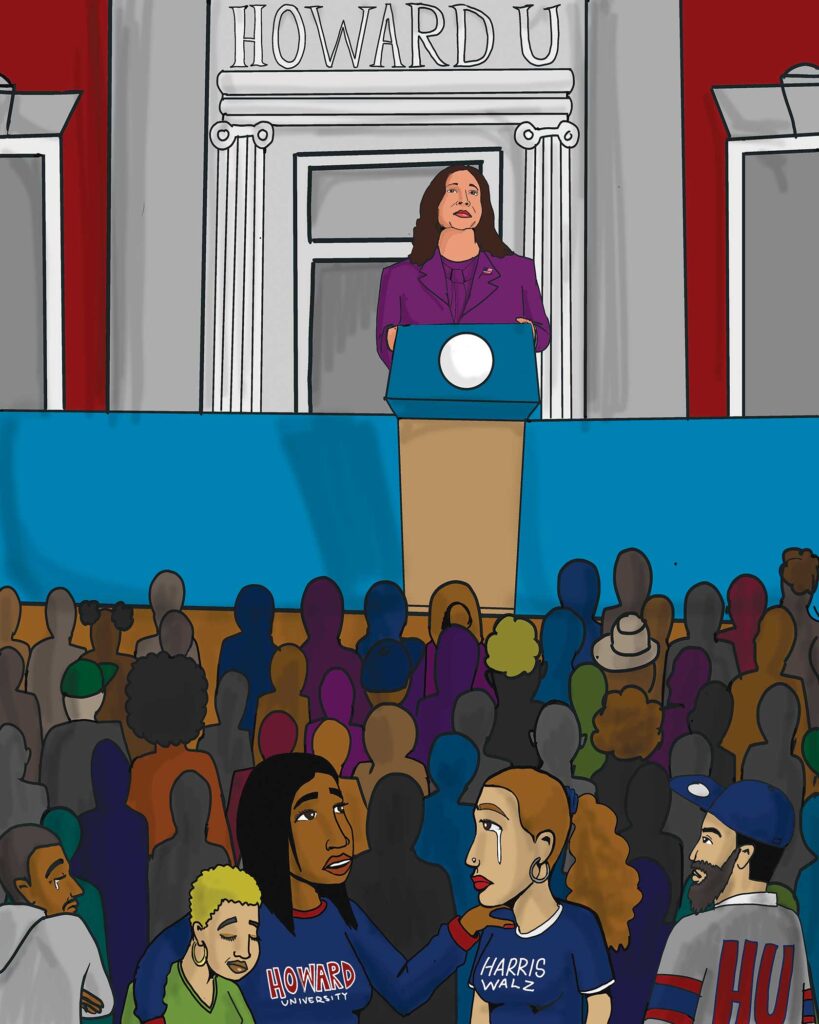
The dominant view among pundits in the wake of last week’s race for the White House is that Kamala Harris and the Democratic Party suffered an overwhelming defeat. But a close look at the electoral facts paints another picture. Donald Trump’s victory margin over Harris in the popular vote was 4.3 million out of over 146 million cast for the two major-party candidates. Trump took 50.3% and Harris 48.1% — a difference of less than 3%. That’s hardly the major landslide being depicted by most major broadcast outlets and social media commentators.
Breaking down the voting landscape even further shows that a shift of only 0.1% of the vote would have handed victory to the vice president.
It breaks down this way: Trump won 312 electoral college votes and Harris 226. The spread of 86 points is decisive but consider what would have happened with a switch of just 135,000 votes in the swing states of Michigan, Wisconsin and Pennsylvania — the so-called “Blue Wall” that was so important to a Harris victory.
Trump took 3.51 million votes in the Keystone State (and its 19 electoral college votes) and Harris 3.37 million — a difference of 140,000. Harris would have won the state with 70,000 more votes.
Trump won 2.8 million votes in Michigan and Harris 2.7 million — leaving them just 100,000 votes apart. She would have needed 50,000 more to beat the Republican nominee and win its 15 electoral college votes.
In Wisconsin, Trump won 1.697 million votes (10 electoral college votes) and Harris 1.667 million — only 30,000 votes separating them. Another 15,000 votes would have given Harris the win in the Badger State.
Overall, a switch of 135,000 votes — 0.1% of the national total — to Harris’s favor would have delivered an additional 44 electoral votes to the vice president for a total of 270 and taken away 44 from Trump, leaving him just short at 268.
But let’s face it — a loss is a loss, even if it’s not as decisive as widely depicted. As we look at the results, it seems hard to understand why so many Americans would choose a convicted felon who is known for sexual abuse and racist dog whistles as president. But to quote Democratic pundit and strategist James Carville’s motto in Bill Clinton’s 1992 victory over President George H. W. Bush, “It’s the economy, stupid.”
In the case of the 2024 election, you could say it was the perception of the economy.
During the campaign, Trump and his Republican allies continually painted the false picture that America’s economy is in decline, despite the fact that unemployment is way down, economic growth is healthy, the stock market is surging and inflation receding. The GOP piled onto to its doom-and-gloom messaging by promoting fears about immigrants and blaming new arrivals for crime and stealing jobs.
It is true that we are paying more for groceries and other essentials compared to the prior Trump administration. But what that fails to take into account is the fact that at the outset of the Biden administration, we were coming out of a pandemic. Manufacturing had been stifled due to the coronavirus’s impact on the economy. As industries roared back to pre-pandemic productivity, the cost of living increased tremendously. Prices for food, construction goods, manufacturing materials and other basic supplies went up – and would have increased no matter which party controlled in the White House.
Taking these things into account, a political campaign that promotes and perpetuates fear and grievance – while linking those scare tactics to economic uncertainty — it’s clear how Trump was able to pin the blame on the incumbent party and regain power.
As we approach the peaceful transfer of power in January, it is important to remember that America respects differences in cultures and values the individual. And moving forward, our country can live up to its founding fathers’ desires to be a nation by, for and of the people and not one governed by a king or an autocrat.
Right now, we must double down our commitment to making sure that this country is the best it can be by working to make sure that the rise of fascism and hatred for others is not allowed to dictate the policies of our nation. Protecting democracy in this day and age is not going to be easy, but it is the most important thing that we as a people must do going forward.
Do not be deluded into thinking that because the electoral college swung heavily for Trump that an overwhelming majority of Americans think that way — because they do not. The numbers don’t lie.
So as you look back at this election, don’t fall into the false narrative that allowed the election to be won by Trump in the first place. Large social media companies and right-wing, Republican media outlets perpetuated misinformation from the beginning of the election cycle, promoting fear with such false narratives as Black Haitian immigrants eating the innocent pets of households in Springfield, Ohio. They combined that with fears of a Black woman becoming president.
One very real concern we must face head-on is that the battle ahead to save our democracy will require vigilance.
The Trump transition team is already proposing to bypass standard FBI checks for their appointments and employees in place of private security companies. Our nation must reject this attempt to remove an important safeguard of our government. And this is only the beginning of what Trump and his team propose to do. Using the Justice Department to go after political enemies, ending our non-partisan civil service and replacing bureaucrats with Trump loyalists and striking down regulations protecting consumers and the environment are high on Trump’s to-do list.
If only more people had stood by Democrats, the country would be in a very different place today. The Rev. Martin Luther King Jr. liked to say, “The arc of the moral universe is long, but it bends towards justice.” But ensuring that justice is achieved requires more than belief — it requires action. And that includes civic engagement, getting out to vote and getting others out to the polls as well. We have nothing to lose but our democracy and that loss would be too great a loss indeed.







